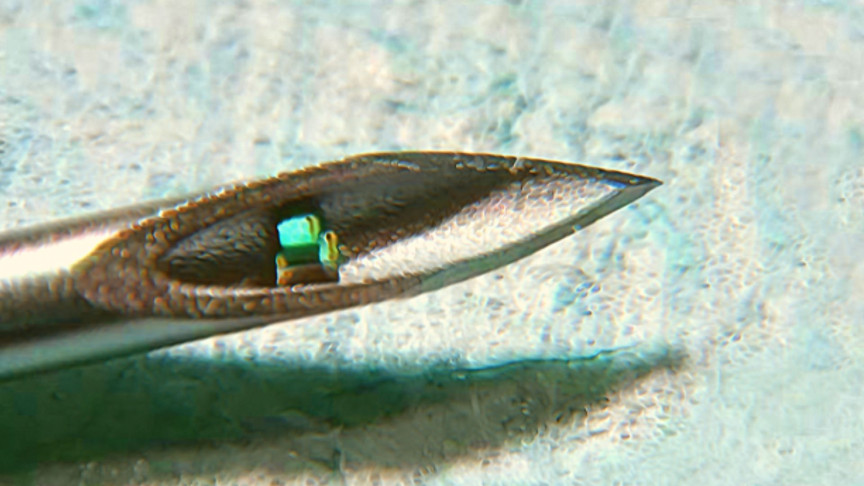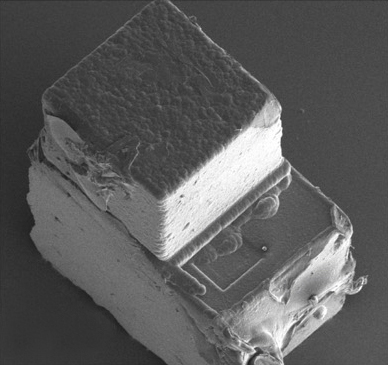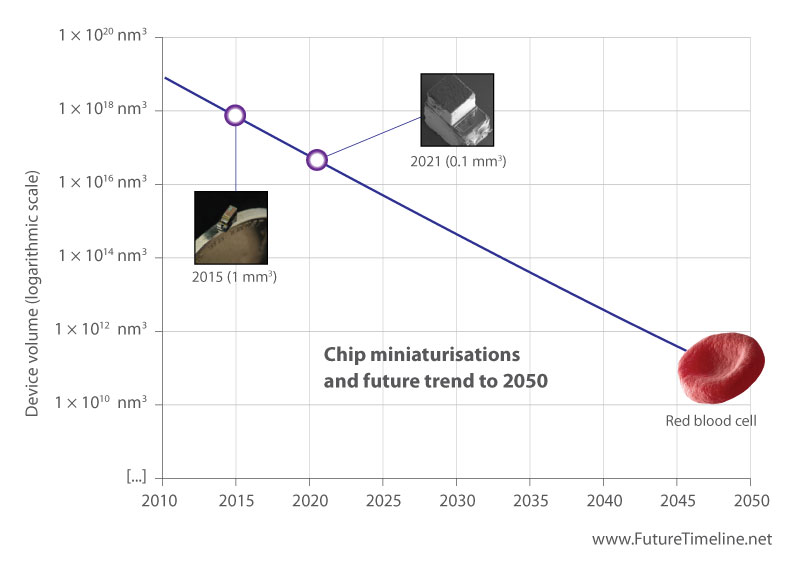
14th May 2021 World's smallest single-chip system is <0.1 mm³ Engineers at Columbia University in New York have created the smallest ever single-chip system that is a complete functioning electronic circuit. This could one day lead to implantable chips visible only in a microscope that can be injected into the body with a hypodermic needle to monitor medical conditions.
Implantable medical devices have already transformed healthcare and improved the quality of life for millions of people. They are widely used to monitor and map biological signals, to support and enhance physiological functions, and to treat diseases. As the technology becomes increasingly compact and miniaturised, researchers are now attempting to design wireless medical devices for in vivo and in situ physiological monitoring. These could be used to provide detailed, real-time analysis of conditions such as temperature, blood pressure, glucose and respiration for both diagnostic and therapeutic procedures. To date, conventional implanted electronics have been highly volume-inefficient. They generally need multiple chips, packaging, wires, and external transducers, while batteries are often required for energy storage. An ongoing trend in electronics has been tighter integration of electronic components, often moving more and more functions onto the integrated circuit itself. In a significant landmark, researchers at Columbia University in New York report the development of what they say is the world's smallest single-chip system, consuming a total volume of less than 0.1 mm³. This device is the size of a dust mite and barely visible to the naked eye. To achieve this, the team used ultrasound to both power and communicate with the device wirelessly. Their study is published in the journal Science Advances.
"We wanted to see how far we could push the limits on how small a functioning chip we could make," said Ken Shepard, Lau Family Professor of Electrical Engineering and Professor of Biomedical Engineering. "This is a new idea of 'chip as system' – a chip that alone, with nothing else, is a complete functioning electronic system. This should be revolutionary for developing wireless, miniaturised, implantable medical devices that can sense different things, be used in clinical applications, and eventually approved for human use." Doctoral student Chen Shi, first author of the study, produced the final design. Shi's design is unique in its volumetric efficiency, the amount of function that is contained in a given amount of volume. Traditional RF communication links are not possible for a device this small because the wavelength of the electromagnetic wave is too large relative to the size of the device. Wavelengths for ultrasound, however, are much smaller at a given frequency because the speed of sound is much less than the speed of light, so the team used ultrasound to both power and communicate with the device wirelessly. They fabricated the "antenna" for communicating and powering with ultrasound directly on top of the chip, as seen in the image above. Taiwan Semiconductor Manufacturing Company – which in mid-2020 became the first foundry to mass produce 5 nm process technology – fabricated the chip itself with no additional packaging. The Columbia Nano Initiative cleanroom and the City University of New York Advanced Science Research Center (ASRC) Nanofabrication Facility then performed additional process modifications. "This is a nice example of 'more than Moore' technology," said Shepard. "We introduced new materials onto standard complementary metal-oxide-semiconductor to provide new function. In this case, we added piezoelectric materials directly onto the integrated circuit to transducer acoustic energy to electrical energy." "Ultrasound is continuing to grow in clinical importance as new tools and techniques become available," added Elisa Konofagou, Professor of Biomedical Engineering at Columbia. "This work continues this trend." In this study, the team demonstrated sensing functionality in vivo for an ultrasound neurostimulation procedure in mice. Eventually, their goal is to develop chips that can be injected into humans, which then communicate using ultrasound to provide real-time information on a range of bodily conditions. If the current trend in miniaturisation continues, blood cell-sized devices could become a reality in the 2040s.
Comments »
If you enjoyed this article, please consider sharing it:
|









